Senate soil study grows deep roots as it uncovers key themes
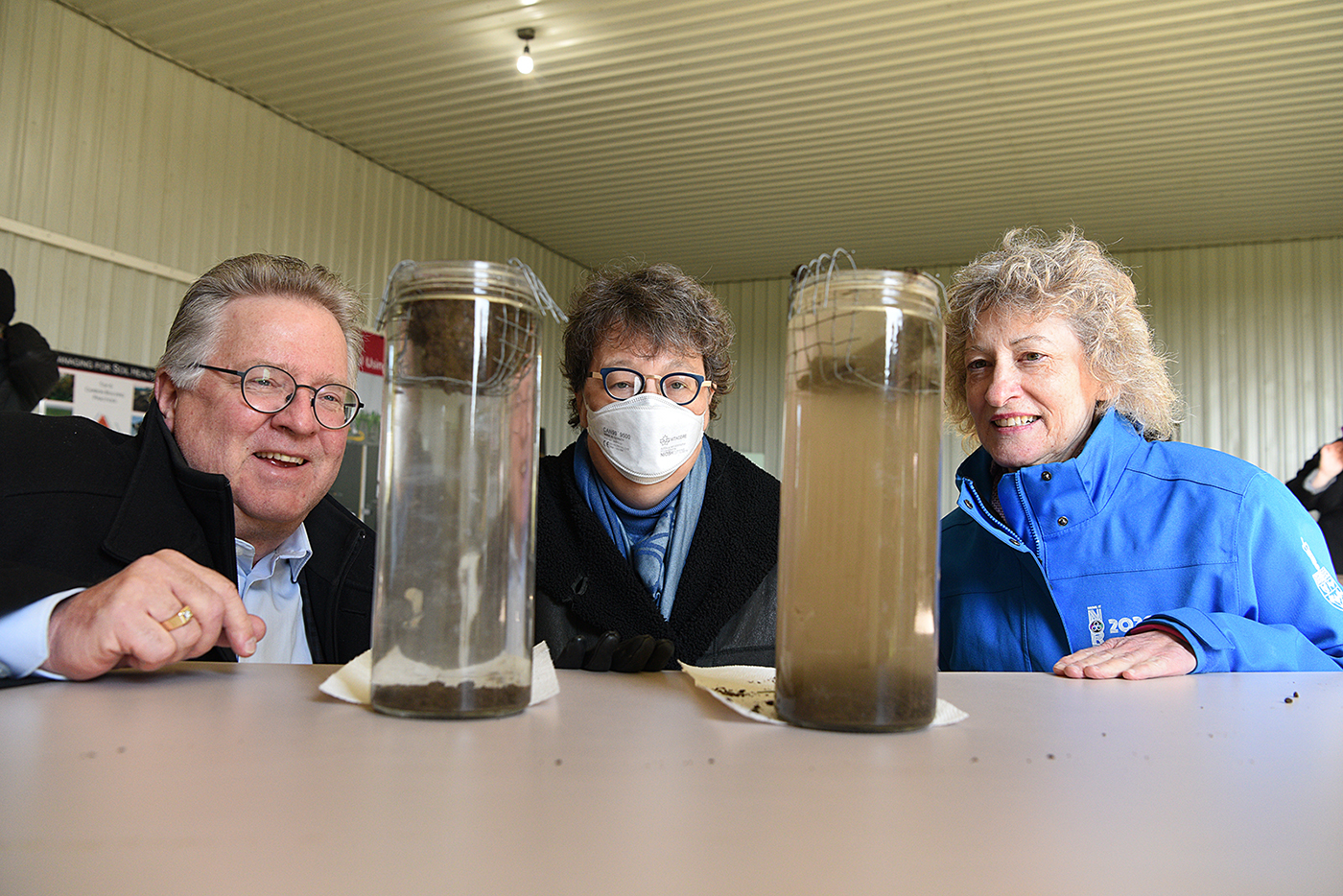
From farms to international forums, the Senate Committee on Agriculture and Forestry has been gathering information, growing relationships and getting rooted in the latest science as it digs into the status of soil health in Canada.
Senators have heard from more than 60 witnesses including farmers, scientists, agri-business people, association leaders, Indigenous producers, environmentalists and government officials — all with unique perspectives on the current state of soil health and how to improve it.
Much of this testimony was heard in Ottawa, but senators have also gone into the field to cultivate their knowledge about soil management practices.
Committee members travelled to Guelph, Ontario, in April 2023, where they heard firsthand how soil was being protected through no-till practices, soil mapping, crop diversification, pest control and carbon sequestration techniques.
Most recently, senators joined soil scientists and advocates at the Global Soil Partnership Plenary Assembly, hosted by the Food and Agriculture Organization of the United Nations in Rome to see how other countries are protecting and enhancing their soil, and whether those practices could be productive in a Canadian context.
Here’s a look at some of the key themes that are being uncovered during this study:
- Soil is the key ingredient in our food: It supplies the nutrients, water, oxygen and root support that plants need. Moreover, better soil means more food on less land. That’s good news for remote and urban areas where farmland is scarce or disappearing, and for the growing global appetite.
- Farming practices can cultivate healthier soil: No-till methods keeps precious micro-organisms in the soil and available for plants. Planting cover crops reduces erosion. New technology to map soil and manage water use has also helped farmers manage soil health.
- Soil health and climate change are linked: Erosion during weather events, changing rainfall patterns and hotter temperatures all affect soil health. At the same time, well-managed soil can store tonnes of carbon, fighting back against climate change.
- There are unique Indigenous approaches to soil health: Indigenous agriculture is built on centuries of regenerative practices in which food systems are viewed holistically.
- Soil is a vital resource that needs protection: It takes centuries to create an inch of soil, but minutes to destroy it. Soil is under threat from urbanization, pollution and climate change. The impact of the soil stressors affects our ability to access food, the quality of our water and ecosystems, and the livelihoods of many Canadians.
- A study on soil is overdue: Without a baseline, it is hard to know whether Canada’s soil is improving or not. Knowing the state of soil today will bear fruit in the future by helping producers and policy-makers make informed decisions well-grounded in evidence.
There’s more to come! Senators head to Saskatchewan and Alberta later this summer to learn more about the state of soil in Western Canada. Hearings in Ottawa will continue this fall.
Follow the committee’s work at sencanada.ca/AGFO.
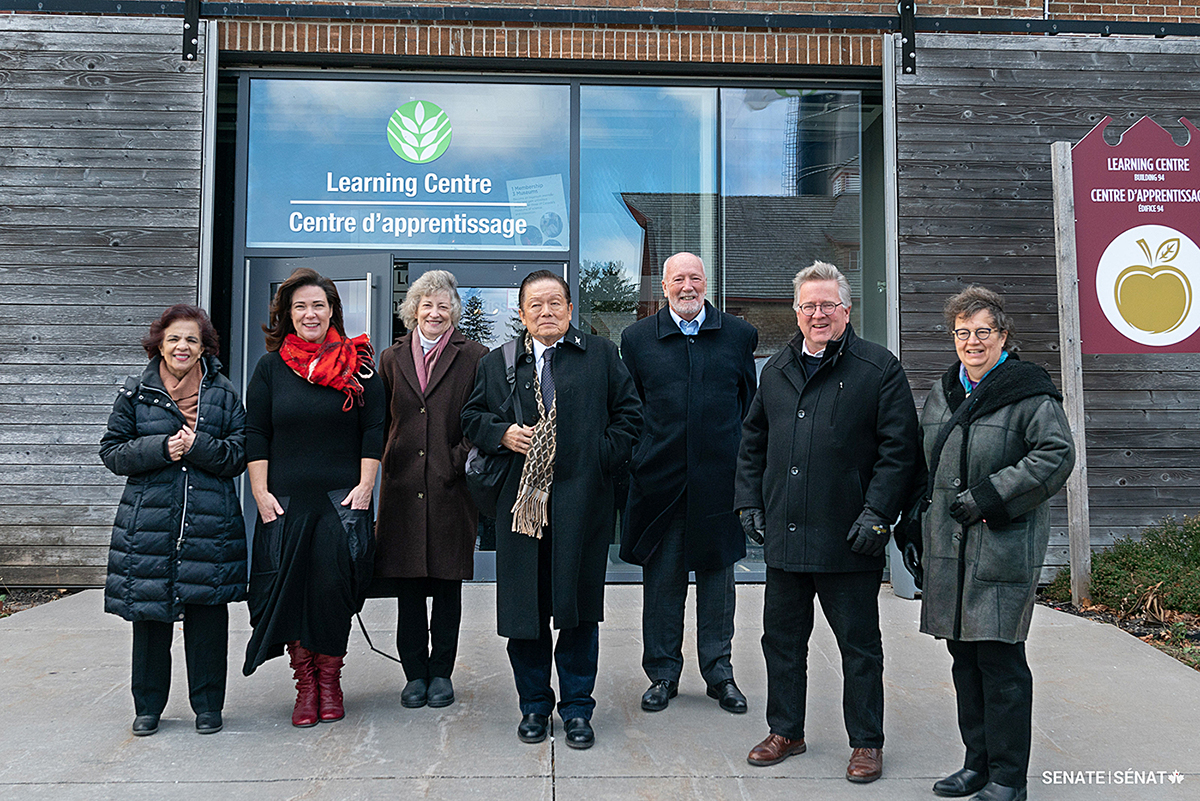
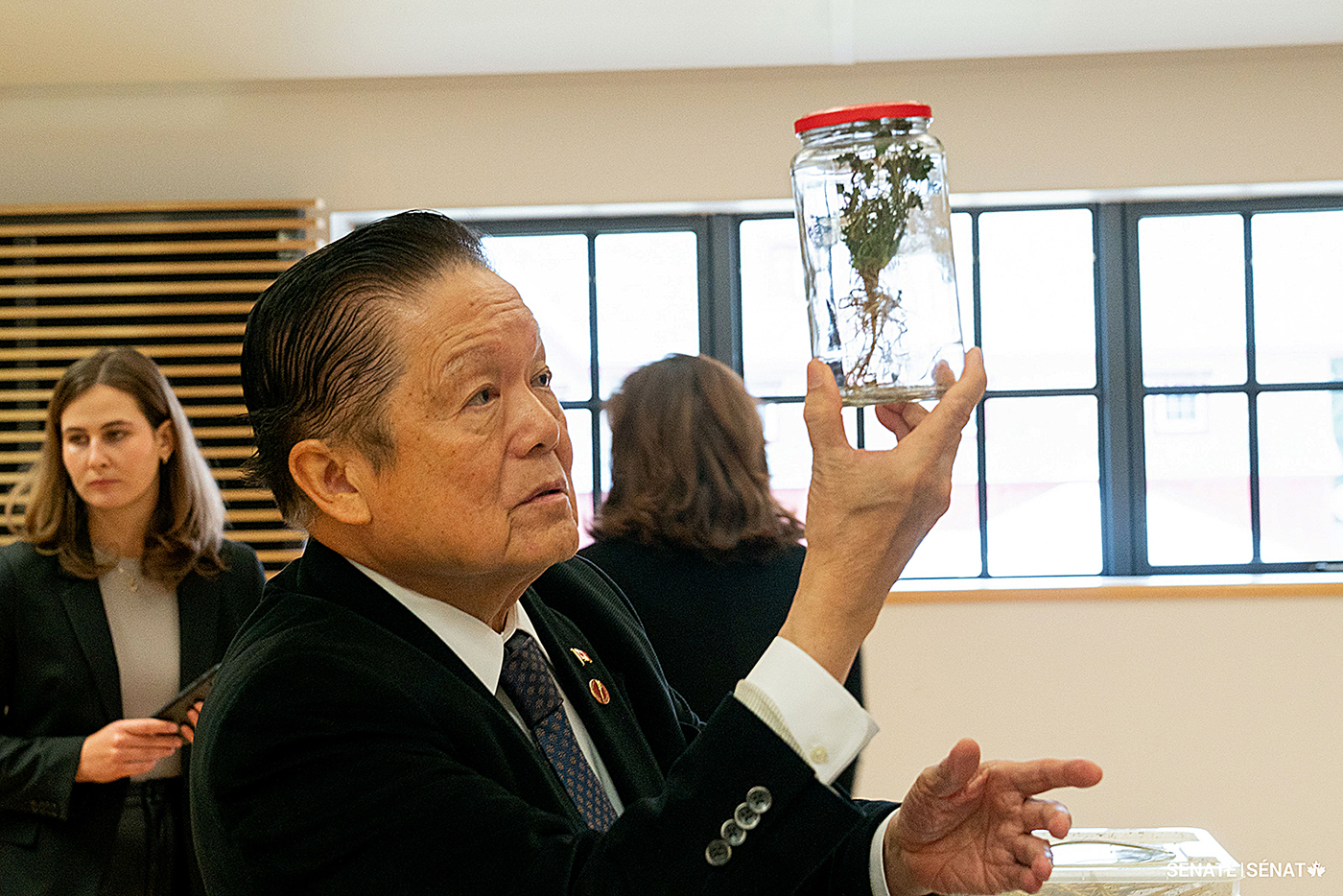
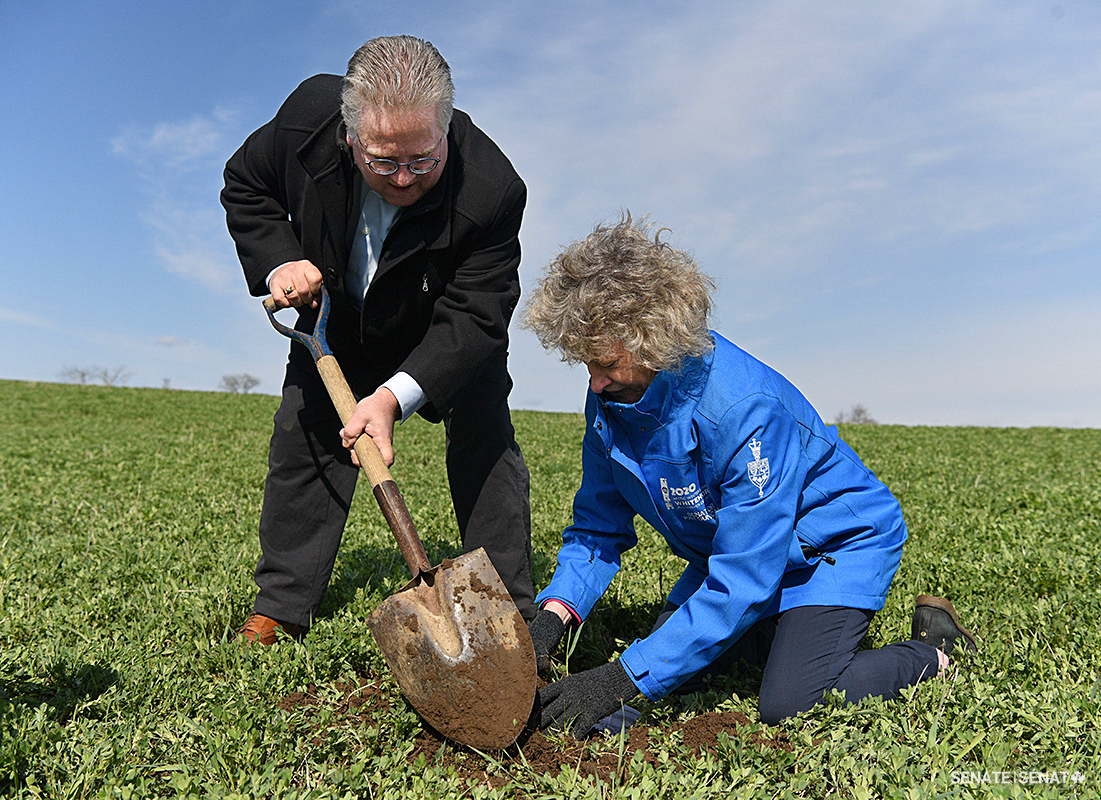
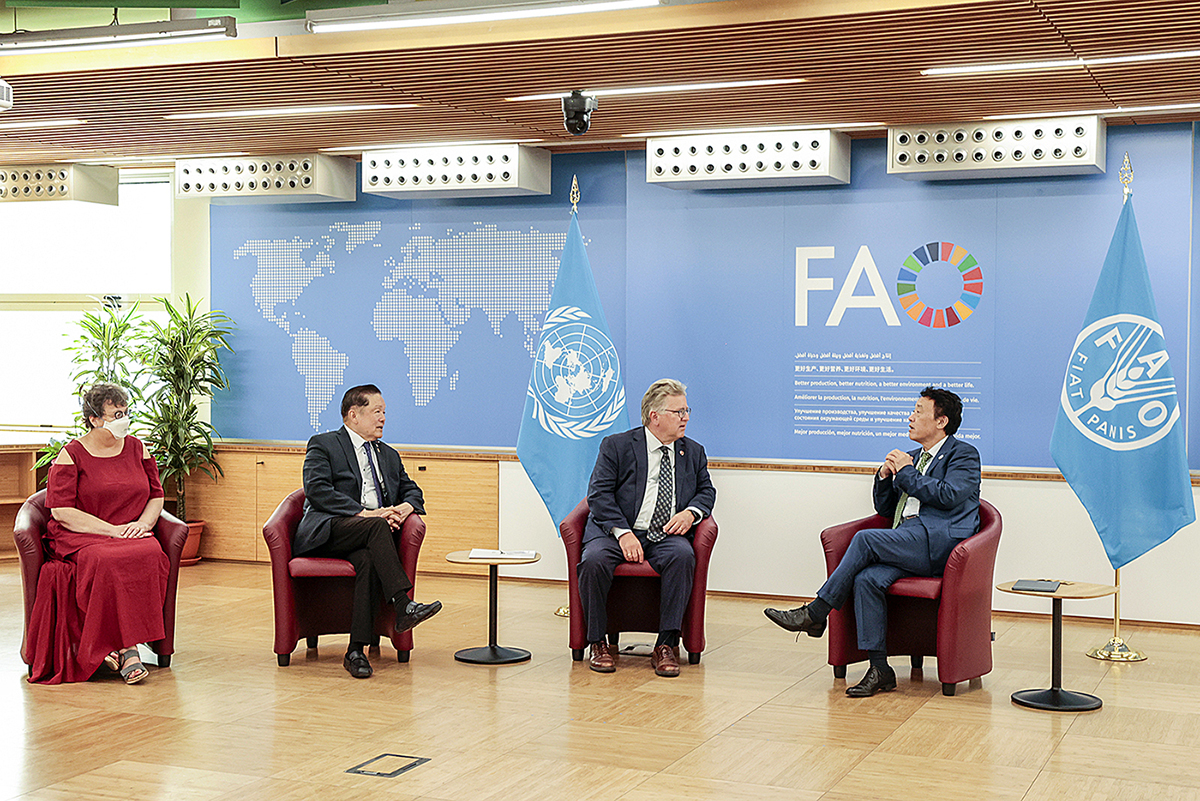
Related articles
Tags
Committee news
Senate soil study grows deep roots as it uncovers key themes

From farms to international forums, the Senate Committee on Agriculture and Forestry has been gathering information, growing relationships and getting rooted in the latest science as it digs into the status of soil health in Canada.
Senators have heard from more than 60 witnesses including farmers, scientists, agri-business people, association leaders, Indigenous producers, environmentalists and government officials — all with unique perspectives on the current state of soil health and how to improve it.
Much of this testimony was heard in Ottawa, but senators have also gone into the field to cultivate their knowledge about soil management practices.
Committee members travelled to Guelph, Ontario, in April 2023, where they heard firsthand how soil was being protected through no-till practices, soil mapping, crop diversification, pest control and carbon sequestration techniques.
Most recently, senators joined soil scientists and advocates at the Global Soil Partnership Plenary Assembly, hosted by the Food and Agriculture Organization of the United Nations in Rome to see how other countries are protecting and enhancing their soil, and whether those practices could be productive in a Canadian context.
Here’s a look at some of the key themes that are being uncovered during this study:
- Soil is the key ingredient in our food: It supplies the nutrients, water, oxygen and root support that plants need. Moreover, better soil means more food on less land. That’s good news for remote and urban areas where farmland is scarce or disappearing, and for the growing global appetite.
- Farming practices can cultivate healthier soil: No-till methods keeps precious micro-organisms in the soil and available for plants. Planting cover crops reduces erosion. New technology to map soil and manage water use has also helped farmers manage soil health.
- Soil health and climate change are linked: Erosion during weather events, changing rainfall patterns and hotter temperatures all affect soil health. At the same time, well-managed soil can store tonnes of carbon, fighting back against climate change.
- There are unique Indigenous approaches to soil health: Indigenous agriculture is built on centuries of regenerative practices in which food systems are viewed holistically.
- Soil is a vital resource that needs protection: It takes centuries to create an inch of soil, but minutes to destroy it. Soil is under threat from urbanization, pollution and climate change. The impact of the soil stressors affects our ability to access food, the quality of our water and ecosystems, and the livelihoods of many Canadians.
- A study on soil is overdue: Without a baseline, it is hard to know whether Canada’s soil is improving or not. Knowing the state of soil today will bear fruit in the future by helping producers and policy-makers make informed decisions well-grounded in evidence.
There’s more to come! Senators head to Saskatchewan and Alberta later this summer to learn more about the state of soil in Western Canada. Hearings in Ottawa will continue this fall.
Follow the committee’s work at sencanada.ca/AGFO.






